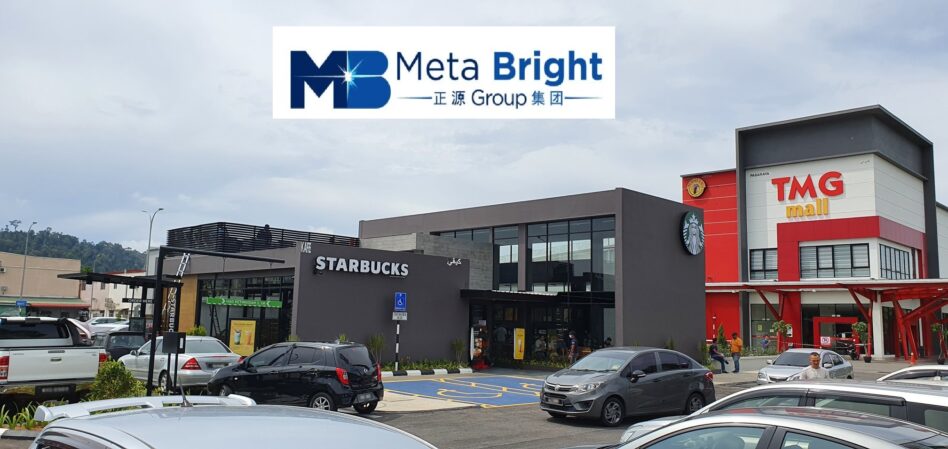By Sulaiman Akhmady Mohd Saheh
BACK in 1991, Tun Dr Mahathir Mohamad unveiled Wawasan 2020 – a vision of Malaysia to be an industrialised, self-sufficient nation by the year 2020.
Now, 29 years later, we are in 2020 but with more to be done to fully achieve such status. The market went through several booms and busts – from the era of Asian Tiger Economies to the Asian Financial Crisis in the 1990s, and in the new millennium, the Dotcom Bust, Subprime and Eurozone Crisis to the latest global challenges and potential trade wars.
In the world of real estate, the nation has experienced the boom and fall in property cycles as well as urban realities making headlines as urbanisation spreads wider. Going into the second decade of the millennium, let us see how the property market has performed in the past year and how to prepare ourselves in the coming months.
General property activities update
2019 came through with more than 6% growth in volume of market activities. Comprising close to two-thirds of Malaysia’s transactional market, the residential sector also pulled through with notable positive numbers of 6.3% nationwide.
Other sectors also showed growth, which as a whole contributed to the overall steady recovery. In value of transactions, there was more of a mix in growth results but in the end came through with a positive 2.1% growth for the country. As at the third quarter of 2019 (3Q19), Malaysia’s transaction numbers stood at 243,358 transactions worth RM102.9 bil.
After experiencing the softening effect that began in 2013, the more notable results of 2019 proved things to be more likely having reached the tail-end point of the downward market cycle.
Although the market is still struggling with issues mainly on the affordability, income level and cost of living issues, some are keeping their fingers crossed for the market to have begun to enter the next early upswing phase.
Residential statistics
The residential sector had experienced a rather bleak period post-2011 where things for the most part fell, if not stagnated.
From the highest point in a decade at 269,789 transactions in 2011, the sector ended in 2018 at less than 200,000 transactions. Going into three quarters of 2019, the persisting gloom seemed to have dispersed and a bright ray of hope shined through in positive growth year-on-year. Transactions have been in favour of units priced between RM200,000 and RM300,000. In response to this pattern, developers have shifted more to similar price levels.
Overhang concerns continue on with a further increase of 11% from 2018, coming to 50,008 dwelling units (houses, condominiums and apartments) worth RM34 bil as end-3Q19. As a countermeasure to this heavy burden, the Home Ownership Campaign (HOC) was extended to run for the whole year of 2019 which also included tax-exemption incentives and discounts by participating developers. Pick-up in developer sales was reported, which leads to the question of whether 2020, after the expiry of the HOC period, could sustain the sales momentum.
Commercial sector
While signs of recovery are seen for the residential sector, few smiles are made for the commercial sector as oversupply concerns persist with the continuous wave of incoming new spaces against the backdrop of the challenging global economic scenario.
In the office segment, purpose-built office spaces in the Klang Valley have reached 132 million sq ft, of which 75.6% are occupied, leaving 32.3 million sq ft vacant as at 3Q19. Though co-working space has been said and discussed in the past year or so, the spread of this sharing office phenomenon seems to be more prevalent especially for new office buildings that have chosen co-working to be the modern feature when attracting tenants and visitors into their building.
Shopping malls are also facing the risk of oversupply. In size, both Kuala Lumpur and Selangor have a combined supply of 72.1 million sq ft of shopping mall space and 83% of these are occupied; the remaining 12.1 million sq ft is currently sitting vacant in the market.
The trend of e-commerce continues to threaten brick-and-mortar malls, but overall, the occupancy rate is still holding up above 80%. In the past, it was viewed that physical malls could potentially be rendered obsolete; however, a trend of fusion is observed – one being the newly opened Taobao Store by Lumahgo in MyTown Shopping Centre. It is a physical storefront for an online shopping website. Another local example of a store that has established itself since 2014 is Stickerrific, an online and offline store specialising in the tools and trade of arts and craft.
Nevertheless, the current saturated situation is strongly pushing mall operators to seek change and re-modernise themselves to suit the demand and preference of today’s visitors. Shopping malls now have become a place of physical socialisation and experiential interaction with heavier focus on food & beverages, leisure, entertainment and “Instagramable” décor.
Industrial – logistics
For the industrial sector, expectations have been placed on it to progress forward, with logistics being the main driver into 2020 which is further complemented by the resumption of several mega projects aimed to improve and expand linkages between different regions of Peninsular Malaysia. The adoption of Industrial Revolution 4.0 technologies such as 3D printing, crowdfunding, artificial intelligence and social media will ultimately reshape the sector and the whole industry into the 2020s.
Budget 2020
From the proposed Budget 2020 presented back in October 2019, the public opined it to be rather small in its offerings to the property industry, particularly the residential sector, but propositions in other areas like public transport and human capital are taken to be measures on a more holistic approach, ultimately improving Malaysia’s quality of life instead of targeted, short-term solutions.
What was propositioned for the housing sector revolved around promoting access to house ownership. Focus has been placed on rent-to-own as a way of overcoming unaffordable house deposits, and to reduce overhang of high-rise units in urban areas, the government will be lowering the threshold prices for foreign buyers down to RM600,000 in 2020 from the previous RM1 mil. But this only applies to readily completed unsold stock, as the measure was aimed at addressing the residential property overhang situation.
We hope Budget 2020 will bring a positive effect to the struggles in the real estate industry. For the sake of sustainable longevity, solid and well-thought-out strategies must be built and implemented effectively and in time.
Resumption of mega projects
On the future of Malaysia’s infrastructure, a number of previously stalled mega projects are back online and set to resume in 2020 onwards. With the main reason for stalling such projects being high costs, the projects resumed had undergone a refinement phase which ended in cost cuts and revised masterplans. The East Coast Rail Link will create a more seamless corridor connection across the East Coast and into Port Klang via Negeri Sembilan and the Klang Valley.
After much uncertainty and hearsay, Bandar Malaysia was officially revived in December 2019 through a signing agreement between IWH-CREC Sdn Bhd and TRX City Sdn Bhd. As part of the revived agreement, Bandar Malaysia will incorporate 10,000 affordable home units and an 85-acre people’s park. Also announced was the decision to maintain Bandar Malaysia as part of the Kuala Lumpur-Singapore High-Speed Rail (HSR) route, which implies that the HSR is back on track but no final decision has been made as of yet.
The public transport segment has not been left behind as rail line extensions continue on for both LRT3 and MRT2. Officially known as the MRT Sungai Buloh-Serdang-Putrajaya Line, MRT2 is on track to completion and operation by July 2022, while LRT3 has been extended from 2020 to 2024. Both projects also underwent a massive cost cut of about RM23.84 bil combined. LRT3 will be connecting Bandar Utama to Johan Setia in Klang through 26 provisional stations.
Moving forward
With 2019 producing stronger numbers, there is more hope for a sustained upward recovery here on out, barring any unexpected external or internal forces which could affect the positive progress.
Globally, tensions are high with ongoing economic trade wars and new political conflicts, making 2020 a year to be observed and prepared for. New trends and shifting demographics are at play in reshaping the market we live, work and play in, forcing market players to restructure and adapt themselves for survival’s sake.
As markets become more and more saturated, new products and marketing strategies have evolved to accommodate the buyers of today against the urban reality of unaffordability. As an industry that encompasses all and anything physical, it is crucial for the property industry to embrace changes and new ways of doing things to successfully thrive amid the struggles of today and the future. – Feb 10, 2020
Sulaiman Akhmady Mohd Saheh is director of research at Rahim & Co International Sdn Bhd, one of the largest real estate consultancy firms in Malaysia









